30/01: More Swamp
Category: General
Posted by: The Agnew Family
About 25 miles south of Metairie is the Barataria Preserve (part of the Jean Lafitte National Historical Park and Preserve). The preserve's 23,000 acres include bayous, swamps, marshes, forests, alligators, nutrias, and over 200 species of birds. Being winter, the alligators were all in their holes and many of the birds have gone south for the winter.
Ed and I decided to follow the popular trails and hiked the 4 mile round trip from the visitors center. These trails took us through a swamp, a marsh and along a canal.
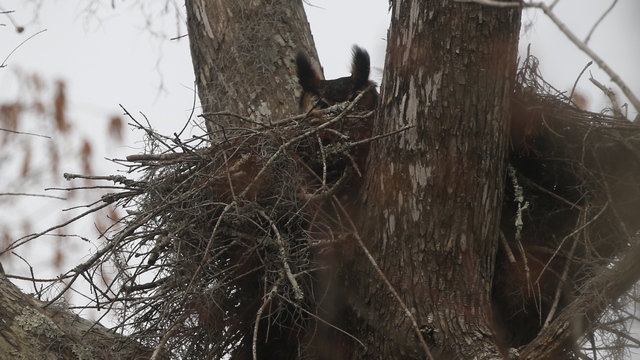
A fellow hiker told us where to look for this owl. All that's visible is the top of his head, one eye and his ears.
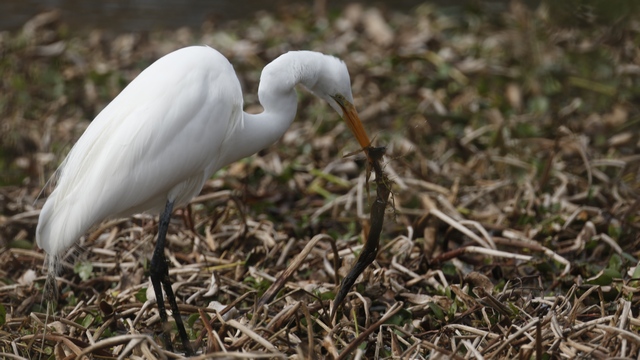
We saw a number of sparrows, some chickadees, a woodpecker and a few egrets. This egret was working on lunch.
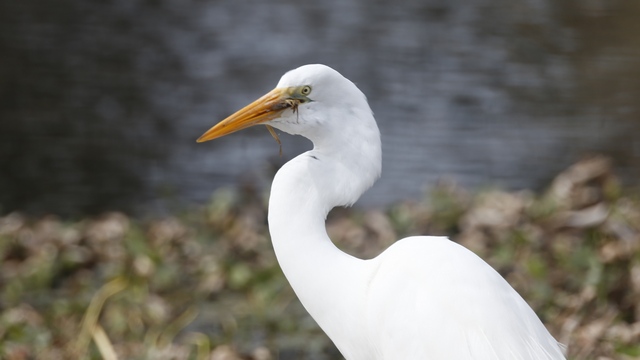
Guuuuulp
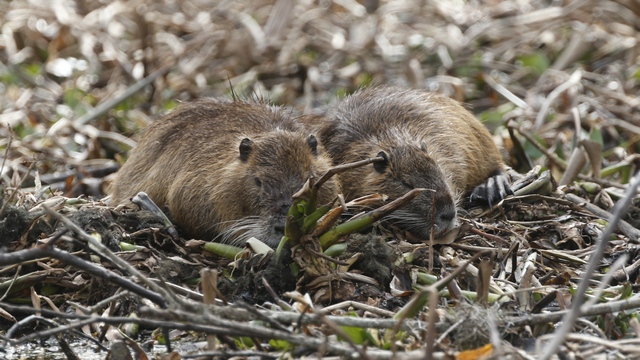
Nutria, Myocastor coypus, are large semi-aquatic rodonts indigenous to South America. In the 1930's nutria were imported into Louisiana for the fur farming industry and somehow ended up released into the Louisiana coastal Marshes. Nutria are considered a pest as they have caused extensive damage to Louisiana coastal wetlands due to their feeding activity.
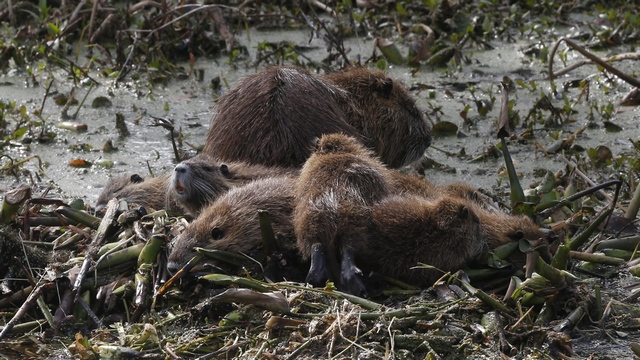
Ed and I think this is a mom with seven babies.
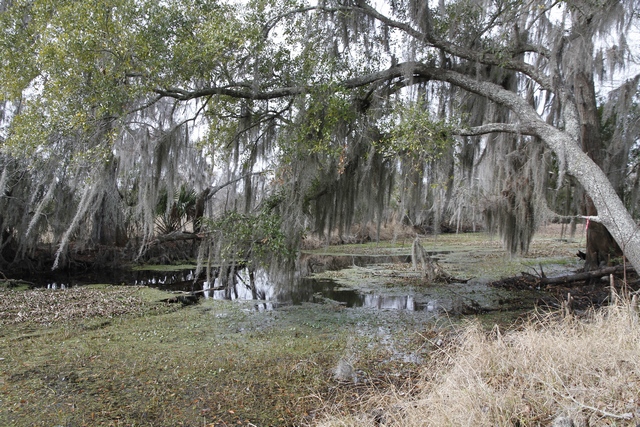
I really love the swamp --- the sound of the birds, the Spanish moss hanging over the water, the total peacefulness of the place and no bugs. They tell me my opinion may change if I visited in the sweltering heat of the August when all the bugs are out. Today the peace was shattered for a little while when large group of Asians (one or two bus loads I'm guessing) were running down the trails looking for items for their treasure hunt. About an hour after the appearance of the first group of about six they were gone and tranquility returned.
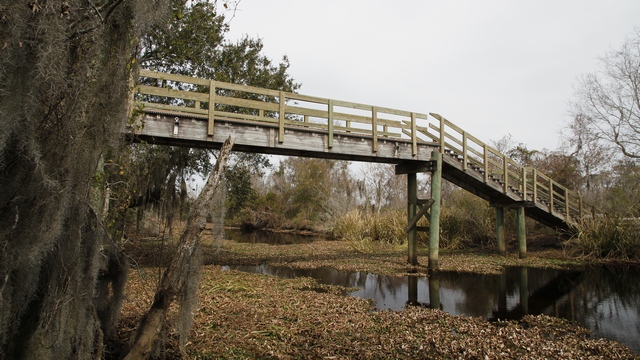
The lookout at the end of the trail.
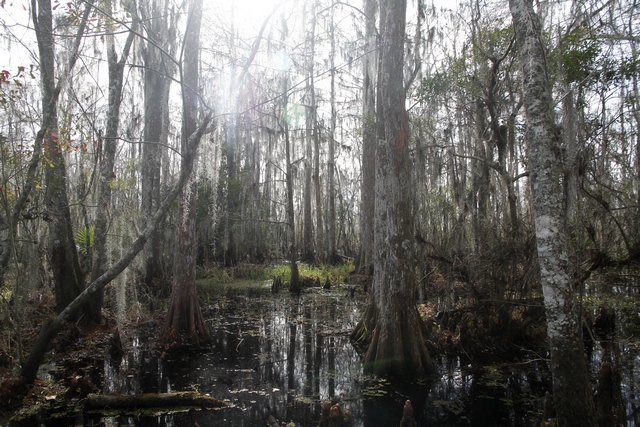
Cypress trees in the swamp.
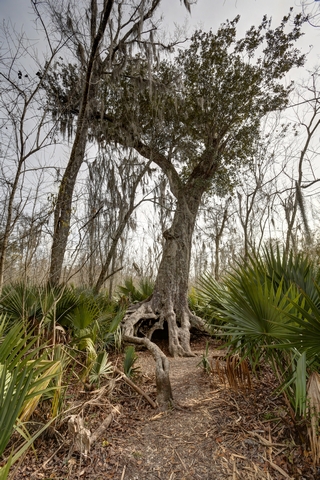
Native American, who occupied this area more than 1,000 years ago, used this area as a dump for shells, bones, pottery, etc. A large mound or "midden" was created. From colonial times until recently this midden was mined for shells to uses as road fill. The midden was excavated from under this live oak leaving it perched on its roots.
Ed and I decided to follow the popular trails and hiked the 4 mile round trip from the visitors center. These trails took us through a swamp, a marsh and along a canal.

A fellow hiker told us where to look for this owl. All that's visible is the top of his head, one eye and his ears.

We saw a number of sparrows, some chickadees, a woodpecker and a few egrets. This egret was working on lunch.

Guuuuulp

Nutria, Myocastor coypus, are large semi-aquatic rodonts indigenous to South America. In the 1930's nutria were imported into Louisiana for the fur farming industry and somehow ended up released into the Louisiana coastal Marshes. Nutria are considered a pest as they have caused extensive damage to Louisiana coastal wetlands due to their feeding activity.

Ed and I think this is a mom with seven babies.

I really love the swamp --- the sound of the birds, the Spanish moss hanging over the water, the total peacefulness of the place and no bugs. They tell me my opinion may change if I visited in the sweltering heat of the August when all the bugs are out. Today the peace was shattered for a little while when large group of Asians (one or two bus loads I'm guessing) were running down the trails looking for items for their treasure hunt. About an hour after the appearance of the first group of about six they were gone and tranquility returned.

The lookout at the end of the trail.

Cypress trees in the swamp.

Native American, who occupied this area more than 1,000 years ago, used this area as a dump for shells, bones, pottery, etc. A large mound or "midden" was created. From colonial times until recently this midden was mined for shells to uses as road fill. The midden was excavated from under this live oak leaving it perched on its roots.